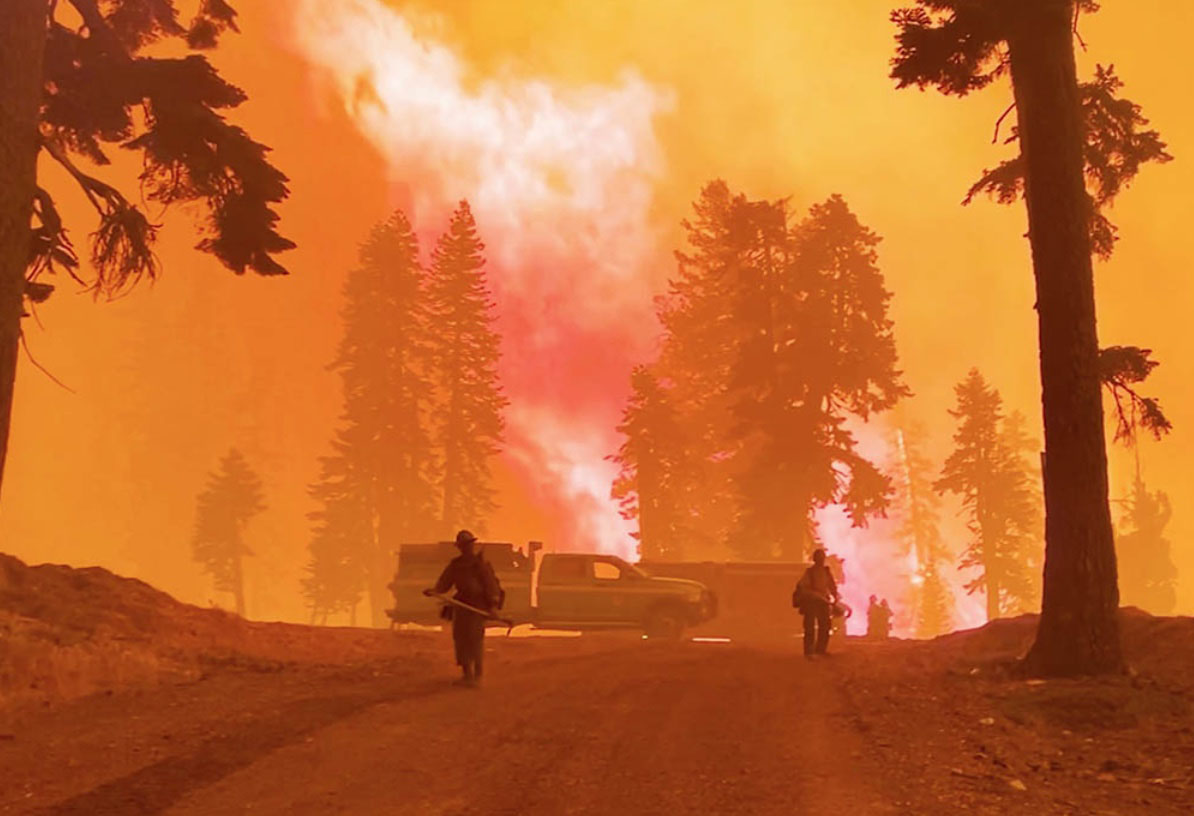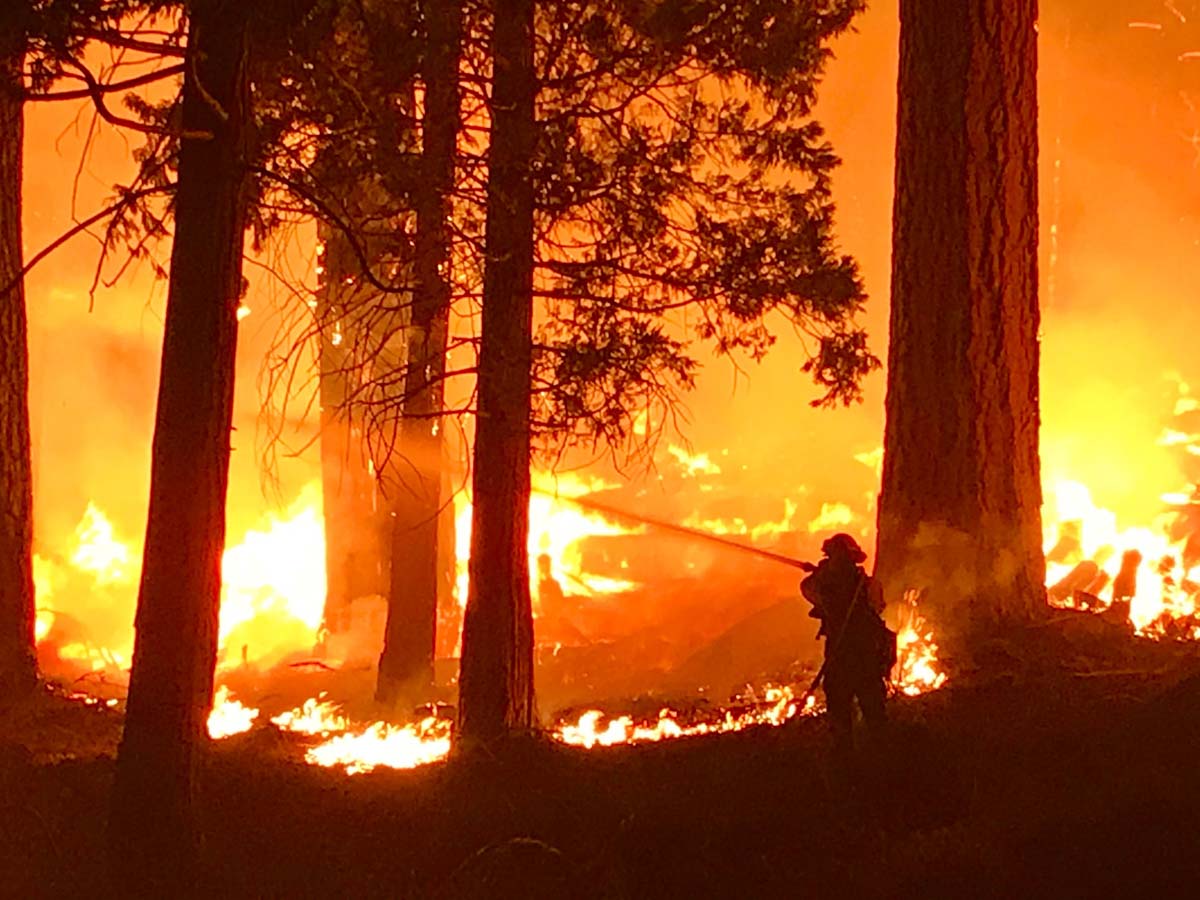
Legislation that passed in 2021 required that federal wildland firefighters be offered the opportunity to move from their present job series, such as Forestry Technician, into a new series configured specifically for wildland firefighters. This would affect employees in five agencies, Forest Service (FS), Bureau of Land Management, Fish and Wildlife Service, Bureau of Indian Affairs, and National Park Service.
Groups have been working on building the blueprint for the new system — which requires selecting a job series, writing position descriptions (PDs), and classifying those PDs by assigning a grade level for each position description. The last step would be making a decision about the pay at each grade level.
Job Series
Most federal wildland firefighters up through the GS-9 or 11 level have been in the GS-0462 Forestry Technician series. The federal agencies have decided that instead of creating a new wildland firefighter series they would just modify one that has not been used much for about 50 years, the Wildland Fire Management GS-0456 series.
The revised classification standards for the series were published in June 2022 and now the agencies have one year from that date to implement the “new” series.
The Office of Personnel Management (OPM) describes it, in part:
“This series includes classes of positions which involve technical and specialized work in the protection of forest or range lands and resources from fire. This series includes general fire management work which is preparatory to the assumption of technical or specialized assignments, and which is accomplished as a part of specialized functional fire management programs including forest and range fire prevention, presuppression, suppression, postsuppression, fire research, and other specialized work relating to fire management programs.”
Right now the agencies are tasked with working with two groups, human resource managers and subject matter experts, to develop position descriptions that accurately reflect the jobs performed in 2022. They are also classifying each PD and assigning a grade level that will affect pay. They also have to evaluate all 286 of the PDs to determine whether they will qualify for firefighter retirement coverage. In a perfect world the refreshed PDs would describe what the employees actually do at that level, and the GS grade would be correctly and impartially assigned without bias or a preconceived agenda.
We have been in contact with several people who are closely involved with this process. One of them told us that the old GS-0462 PDs were basically copied and pasted into the new GS-0456 series with a few additional duties added. We were told that the FS Washington Office liaison for this project simply transferred the old point scores for grade determinations into the new GS-0456 series. There appears to be strenuous resistance to including duties in the PDs that would result in their being scored at a higher grade.
On August 31 the FS held an online briefing for some of its employees in the Western U.S. called “FAM to Boots,” with “FAM” meaning Fire and Aviation Management. One of the speakers during the one-hour call was Ben Elkind, a smokejumper who would fall into the “boots” category but was serving as a representative of the union, the National Federation of Federal Employees (NFFE). He has been involved in the process of transitioning to the new firefighter job series, including reviews of the PDs and classification.
“Over the next few meetings we learned that the process was basically a crosswalk,” Mr. Elkind said in the call. “I think a lot of people were expecting to get a higher grade or to have new duties added to their PDs. But what we were told is that the PDs are not changing grades, and that’s the direction from the Washington Office. As well as keeping the grades the same, they’re attaching the grades to the PDs to send them to classifications. So they’re not independently grading them. They’re just looking at the grade that is attached to them and stamping that grade on there. We’re just kind of wondering why aren’t they following a process independently and letting people grade these without kind of pre-setting the grades.”
“We’re debating internally whether or not to continue our participation,” Mr. Elkind continued. “We don’t want our participation seen as like a stamp of approval. And just to give an example of the grades, right? The Forest Service makes the grades, like a hotshot superintendent, 2,100 points would be required for the next grade up, and they’re scored it at 2,090. So less than half a percent holds them back from getting an upgrade. This is the kind of stuff that we’re concerned about, and it seems like they’re working backwards — the grades are set and then they’re just making a PD to match, and then they’re grading it arbitrarily to match what they want.”
Wildfire Today communicated with Morgan Thomsen, who is also participating in the process as a representative of the union. He speaks not for the union, but as a union rep.
“My biggest concern and reticence to remain involved in this process, is that the Washington Office management (not the FAM subject matter expert folks) are choosing to use terms like “may” in these PDs to willfully avoid any sort of meaningful classification,” Mr. Thomsen said. “As an example: the new Interagency Hotshot Crew Superintendent PD states that a Superintendent “MAY” perform as a Branch Director or Operations Section Chief. Another PD says: “MAY perform qualifications on red card.” While this is true, we certainly “may” and certainly do; I am a GS-7 doing Division Supervisor trainee. No PD even requires Division Supervisor below the Assistant Fire Management Officer level. Instead of trying to copy/paste 0462 PDs and sneaking in more duties using the term “may” as a cop-out, we might as well just be real here, go back to the drawing board, and produce some PDs that will actually work for the coming decades.”
Pay
The temporary pay increase funded by a specific Congressional limited appropriation is expected to last through September 2023. Beyond that, firefighters’ pay would regress to the previous paltry amounts, unless a permanent fix is developed by Congress or the agencies develop a new special rate pay.
Brian Rhodes, who was also on the call,works in the FS Washington Office and has a major role in the transition to the new series. He spoke for an extended time, but while verbally dancing around the issue of a long-term pay increase, he would not divulge what was being considered.
Dispatchers
As it stands now, fire dispatchers are being reviewed for inclusion in the 0456 job series, but they could elect to remain in the 0462 series. Mr. Rhodes said at one point that OPM did not believe dispatchers “met the major duties of a wildland firefighter.” He said the FS hopes to revisit that decision with OPM.
At the end of the presentations in the FAM to Boots call, a dispatch center manager brought up the subject, saying “It’s a really big deal to us, [and, if it is not resolved soon] we’re going to have people walking out the door, people that have been with us for years that have dedicated their lives to the safety of all of our firefighters. … I think we’re an integral part of keeping people safe and making stuff happen. I don’t want my group to be an afterthought.”
“Hire to retire”?
There is an understanding among firefighters that one of the goals of the new job series was that a person could remain in the series from “hire to retire.” But there are indications that it will top out at the GS-9 level. One of the many issues that leads to difficulty in retaining experienced firefighters is that when they become a GS-7 or GS-8 they look up and see a narrowing career ladder with no room for them. That can lead them to quit, and they take their existing qualifications over to CAL FIRE or state or local fire departments, often doubling or tripling their pay.

